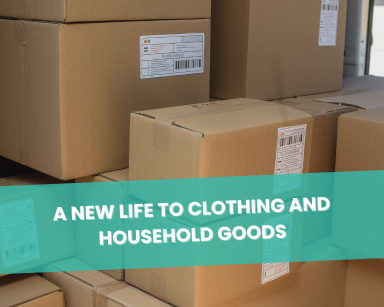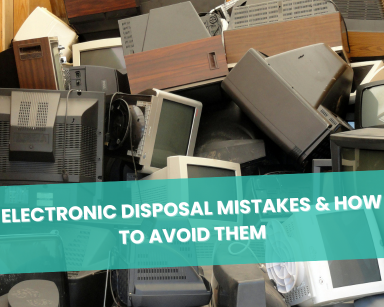Beneficial Reuse vs Recycling: Examining the Sustainability Metrics
Table of Contents
Beneficial Reuse vs Recycling
In a world drowning under the weight of its own waste, a critical question emerges from the rubble: Beneficial Reuse Vs Recycling. Which path holds the key to our planet’s survival?” Every disposable item we thoughtlessly toss aside echoes a decision that pits immediate convenience against the longevity of our Earth.
Amidst the dire urgency to find sustainable solutions, we find ourselves at a significant juncture where understanding the nuanced difference between recycling and beneficial reuse isn’t just about waste management, it’s a declaration of our commitment to the future.
Our decisions today will either burden generations with the remnants of our consumption or bestow upon them a legacy of responsibility and resourcefulness. The choice has never been more profound, nor the stakes higher.
The Foundation: Beneficial Reuse Vs Recycling
When we take a step back to study waste management, we encounter two terms often used interchangeably: recycling and beneficial reuse. Recycling, the process of collecting and processing materials that would be otherwise discarded, allows them to be transformed into new products.
Beneficial reuse, on the other hand, involves reusing materials in their original form, extending their lifespan and reducing the need for new resources. It’s a step higher on the waste hierarchy, as it prioritizes prolonging the lifecycle of materials before resorting to recycling them.
Delving Deeper into Beneficial Reuse
In the quest to mitigate our environmental impact, beneficial reuse emerges as a robust strategy. It helps circumvent the energy-intensive processes associated with recycling, thereby curtailing our carbon emissions substantially.
From an economic perspective, beneficial reuse offers significant cost savings by eliminating expenses related to collecting, sorting, and processing recyclable materials. Moreover, it opens up avenues for businesses to avail tax credits, providing fiscal incentives to adopt this sustainable practice.
A Closer Look at Recycling
Recycling, while still an essential waste management strategy, presents certain limitations. Its environmental impact, though moderate, is overshadowed by beneficial reuse, mainly due to the energy-intensive processes involved in recycling. The economic benefits and resource conservation capabilities, while commendable, still fall short compared to beneficial reuse.
The Analysis: Beneficial Reuse Vs Recycling
The side-by-side analysis of beneficial reuse and recycling highlights compelling contrasts between these two waste management methods.
- Positive Environmental Impact: Beneficial reuse significantly trumps recycling in the realm of environmental preservation. By curtailing energy consumption and curbing carbon emissions associated with recycling, beneficial reuse helps cut down greenhouse gas emissions extensively. This leads to a markedly high positive environmental impact compared to the moderate impact generated by recycling processes.
- Economic Benefits: When we shift our lens to the economic spectrum, beneficial reuse yet again gains the upper hand. The cost-effectiveness of beneficial reuse originates from the elimination of expenses tied to the collection, sorting, and processing of recyclable materials. Recycling, despite providing moderate economic benefits, often incurs higher costs due to the involved processes, making beneficial reuse a more economically advantageous alternative.
- Resource Conservation: In the context of resource conservation, beneficial reuse shines by efficiently prolonging the life of products and materials. It helps conserve natural resources such as raw materials, energy, and water by reducing the need for extracting and processing new resources. Recycling, while still contributing to resource conservation, falls behind due to the moderate efficiency level of the process.
- Turnaround Time: Time efficiency is another area where beneficial reuse outperforms recycling. Beneficial reuse boasts a turnaround time of just 2-4 days, making it a swift and efficient solution. The turnaround time for recycling, however, varies depending on the material type, often leading to longer processing times.
- Tax Credits: From a fiscal perspective, beneficial reuse presents opportunities for significant tax credits, providing an additional economic incentive for businesses. In comparison, recycling offers limited tax credits, making beneficial reuse a more attractive prospect for businesses aiming to balance their environmental commitments with fiscal prudence.
Digging into the Details: The Sustainability Metrics of Beneficial Reuse
Beneficial reuse aligns seamlessly with the principles of a circular economy, an economic system designed to eliminate waste and continual use of resources. By keeping products in use for longer, beneficial reuse champions this transition from a linear to a circular model.
Consider a scenario where office furniture, instead of being recycled, is donated to local charities or schools, maintaining its functionality while providing a societal benefit. This not only conserves resources but also reduces waste volume and offers significant cost savings.
Leveraging Beneficial Reuse: Benefits Beyond the Environment
When businesses embrace beneficial reuse, they unlock the potential for creativity and innovation. New uses for products can be discovered, pushing us to rethink our traditional concepts of waste and fostering resourcefulness.
Adopting beneficial reuse is more than just an environmental stance; it’s a testament to a brand’s commitment to sustainability, enhancing its reputation and fostering customer loyalty. Moreover, it ensures compliance with increasingly stringent waste management regulations.
Quantifying the Impact of Beneficial Reuse
Implementing beneficial reuse programs can result in substantial waste reduction by up to 50% or more. Energy savings typically range from 20% to 50%, while potential resource savings could be 30% to 60% or more. Cost savings are equally significant, with businesses saving approximately 20% to 50% compared to recycling, considering the reduced processing and transportation costs.
Conclusion
As we stand on the brink of a sustainability revolution, the choice is clear: beneficial reuse offers an efficient, economical, and ecologically sound approach to waste management. By choosing beneficial reuse over recycling, we can create a more sustainable and circular economy, paving the way for a greener, cleaner future. Let’s not just recycle; let’s reuse, repurpose, and reimagine for a world less burdened by waste.










